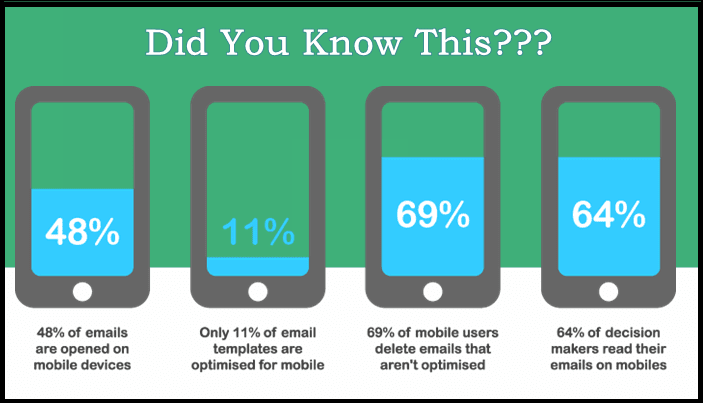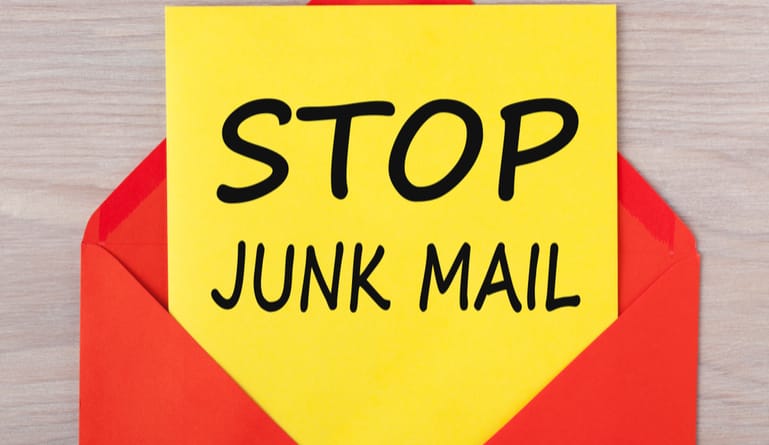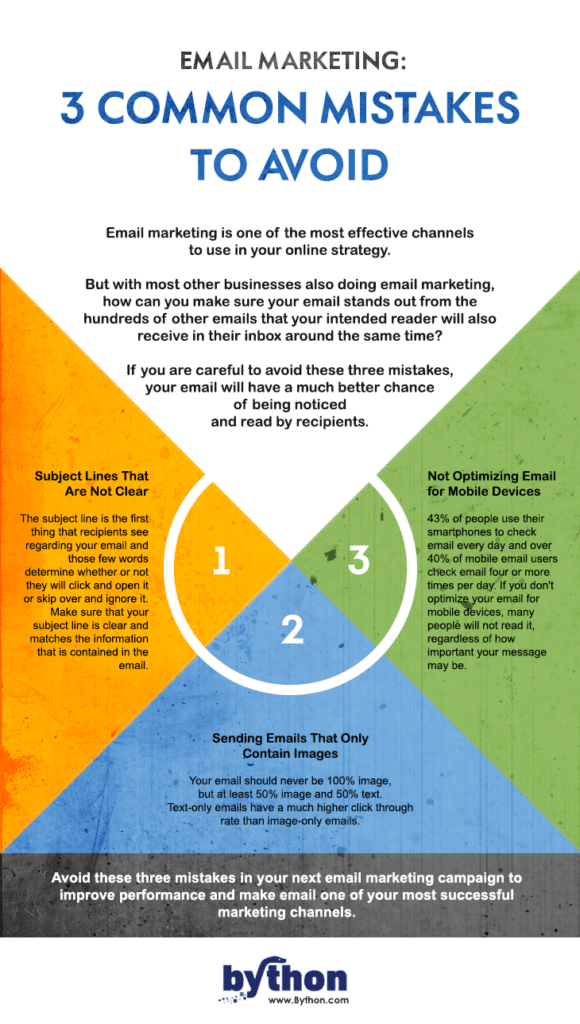Even in the age of social media, banner ads, and text messaging advertising, email marketing is a viable marketing technique; in fact, B2B businesses still hold email as the 3rd highest-ranking source of business information, behind word of mouth recommendations and industry thought leadership.
Some studies have shown that there is a 38:1 ROI to cost ratio when it comes to email marketing, making it a clear revenue-generating strategy. With so much at stake, it’s important to take email marketing seriously and continue putting effort into email marketing programs. Here’s how to combat the most common email marketing mistakes and ensure engagement and ROI for your business.
Steps to take to avoid mistakes in your email marketing
Email marketing can still be a powerful tool to reach customers. When it comes to running a successful email marketing strategy here are the best practices to keep in mind to help engage with customers and avoid missteps.
#Use Clear Subject Lines
The first thing that a recipient notices about an email is the subject, so this is where every email should start. Your subject line should be understandable and consistent with the content of the email. Here are some ideas to help you create clickable subject lines:
- Avoid the word free – people like free things, but that word can trigger modern spam filters. Try “special gift” or other languages if you want to extend an offer to your customers.
- Use ‘fear of missing out’ techniques – having limited-time sales and offers can encourage action.
- Ask your customers for their input – asking for feedback, ratings, and other activities make your customers feel engaged.
Good subject lines are the first step to avoiding email marketing mistakes that can render your efforts unsuccessful.
#Practice Good Email Hygiene
Good email hygiene means keeping up with compliance rules, as well as maintaining accurate lists. There are several ways to ensure good email hygiene:
- Use automated cleaning campaigns to avoid high bounce rates as it can lower deliverability and damage business reputation.
- Aim for a good sender reputation because it helps your “inboxing” rate. Every time that an email gets bounces, gets deleted, is opened, etc. feeds an email algorithm that email providers use to calculate your reputation. The higher your reputation, the less likely your emails will end up in spam boxes.
- Improve your list reliability by managing soft bounces, role accounts, and unengaged subscribers.
- Ultimately, good email hygiene is an important marketing component that can help you maximize your engagement.
#Measure Email Inboxing
Avoid measuring the success of your email marketing campaign from the email delivery percentage rate. The reason for this is because all emails which are delivered may not have landed in the recipient’s primary inbox. Many emails might end up in spam folders. To measure where you stand, use tools that measure email inboxing. These email marketing tools can break down email delivery at a micro-level and help you understand your real delivery rates.
- 250ok: This tool gives you access to almost every action taken with emails you send, making it easy to track which emails are actually landing in inboxes as opposed to spam folders, trash files, and other places.
- ReturnPlatform: ReturnPlatform gives you better insight into your deliverability and helps you understand which emails are getting inboxed. This can help you discover issues with your email program and optimize your campaigns accordingly.
#Use Engagement Segmentation
ISPs typically prioritize high levels of email engagement. They want to check if people are opening, reading, scrolling through, and engaging with your emails. To drive better results across the board, stagger with your email sends. If you send the emails in high volumes, you can achieve good results by giving separate IPs to your email marketing campaigns based on:
- Subscriber importance
- Engagement
- Purpose
Segmented emails are reported to have up to a 14% higher open rate than other emails and can help you reach more customers.
#Use a Re-Engagement Strategy
The cost of acquiring a new customer is higher than the cost of keeping an existing one. With this in mind, you must engage using every possible technique to re-engage inactive subscribers or customers. To pull these customers back into the fold:
- Re-engage those who still want to hear from you – creating an email drip campaign means you have steady, relevant engagement with subscribers.
- Determine who doesn’t want to hear from you – monitoring your email unsubscribe lists is key to maintaining the most accurate and reliable analytics about how your emails are performing.
- Clean up your email lists – don’t keep an outdated subscriber list to maximize results and protect your business reputation.

Source: Exit Bee Blog
#Create Better Content and CTAs
Some organizations believe that if they’ve sent their marketing emails, they’ve done their job. But not focusing on the content of your emails is a mistake. No matter how many emails are sent, what’s in the email is the most important feature. Creating the best content for your emails means:
- Relevancy: Content should be timely and applicable to your customer’s interests. It’s important to personalize your content to your email subscribers, so you can position yourself as a reliable and helpful resource.
- Correct: Proofread and edit – clean, correct content makes your business seem like a competent, trustworthy source of information.
- Simple CTAs: You want to give your customers action to take so they know how to interact with and benefit from your content. “See it now”, “learn more”, and “read now” are simple ways to encourage customers what to do next.
#Ensure Mobile Optimization
Optimizing your campaign for mobile responsiveness is an absolute must in this mobile age. Designing your emails around this factor is key – several years ago, one digital firm noted that if emails aren’t optimized for mobile, up to 80% of users will automatically delete them. While versioning out emails for mobile can be an additional commitment of resources, it’s an important step to take to ensure mobile usability can drastically increase email engagement.
Source: Getting Buyers to Click and Purchase Through Engaging Email Marketing
#Make Better Testing Decisions
A/B testing is crucial in email marketing. Changing one feature of an email – the subject line, header image, CTA, or other variables – gives you two similar emails and a way to measure which resonates better with consumers. Tracking the performance of these differences can help you make adjustments and tweaks in future campaigns.
Several email marketing tools can help automate your A/B testing, without requiring you to manually manage it.
- Unbounce: This tool measures site interaction and seamlessly combines with email marketing software, including Aweber, Hubspot, Mailchimp, CampaignMonitor, ConstantContact, Zoho, Salesforce, and more.
- GetResponse: This tool tracks open rate and click-thru rate data. It also has an email comparison feature that makes it easy to figure out which email in your A/B test performed better.
#Don’t Rely on the Same Strategies
In 2019, email marketing is still projected to be one of the main digital marketing strategies, with some research notes that “73% of marketers do not intend to adopt influencer marketing, live video, chatbots, AI, or machine learning in the coming year.” While this means that email marketing is still a viable connection and communication method, it also means that companies that aren’t afraid to step out of their comfort zone or invest in new technologies may be able to have an edge over competitor businesses.
Running a successful email campaign is an important part of building your brand, engaging with your customers, creating fans of your business, and driving revenue. Using these steps can help you avoid the email marketing mistakes that may lower your engagement and ultimately protect your business and your bottom line.






